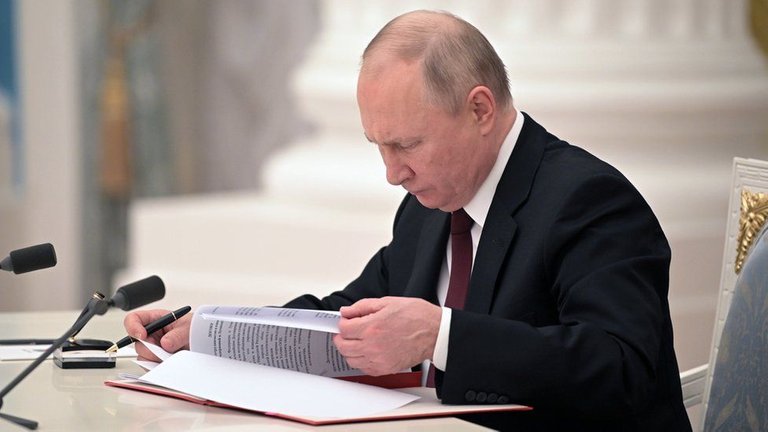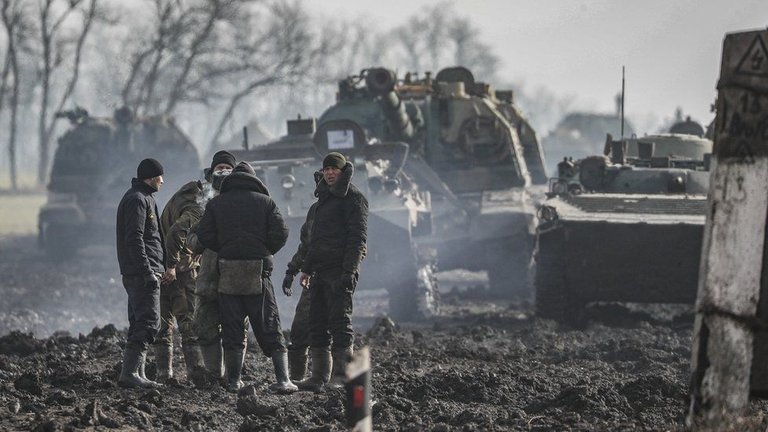When Vladimir Putin destroyed peace in Europe by way of unleashing war on a democracy of forty four million people, his justification was once that contemporary Western-leaning Ukraine was once a regular hazard and that Russia could no longer sense "safe, developed, and existent".
But after weeks of bombing, lots of deaths and the displacement of tens of millions of refugees, the query remains: What is the purpose of his combat and is there a way out of this situation?
What does Putin want?
The goals set via the Russian president at the establishing of the Russian invasion appear to have been curtailed throughout the war, which used to be assumed to give up in a swift victory. Putin should now not even admit that it was once an invasion or a war, preferring the phrase "special navy operation".
What is clear, however, is that he sees this as a pivotal moment in Russian history. "The future of Russia and its future place in the world are at stake," said the head of foreign intelligence, Sergei Naryshkin.
The Russian leader's initial purpose used to be to invade Ukraine and brush aside its government, ending continually its desire to be a part of the western shielding NATO.
Putin informed the Russian humans that his purpose was "the disarmament and de-Nazification of Ukraine", to shield those who have been subjected to what he described as eight years of bullying and genocide by means of the Ukrainian government. He burdened that "the occupation of Ukrainian territory is not our plan, we do now not intend to impose some thing on all people by force."
But there had been no Nazis, no genocide, and Russia brutally seized dozens of cities and cities, uniting Ukrainians in opposing its occupation.
The bombing continues, but latest reports from the peace talks point out that Russia is no longer looking for to overthrow the Ukrainian government, aiming instead for Ukraine to end up neutral.
Since Ukraine gained its independence in 1991 with the give way of the Soviet Union, it has moved regularly in the direction of the West, closer to each the European Union and the North Atlantic Treaty Organization (NATO).
The Russian leader targets to reverse that trend, as he sees the fall of the Soviet Union as a "disintegration of historical Russia."
Putin has claimed that Russians and Ukrainians are one people. "Ukraine has by no means had a way of life of establishing a real state," he asserted, denying Ukrainian history.
In 2013 Putin compelled the pro-Russian leader of Ukraine, Viktor Yanukovych, no longer to sign a deal with the European Union, which led to protests that finally toppled the Ukrainian president in February 2014.
Russia responded in 2014 by means of seizing Ukraine's southern Crimea region, fomenting an insurgency in the east and supporting separatists who fought Ukrainian forces in an eight-year struggle that has killed 14,000 people.
There used to be a ceasefire and the 2015 Minsk peace agreement that was once by no means implemented. Shortly earlier than his invasion of Ukraine, President Putin tore up the peace agreement and diagnosed two small states backed via Russia as impartial from Ukraine.
When he sent his troops to Ukraine, Putin accused NATO of threatening our "historic future as a nation", claiming, except foundation, that NATO international locations wanted to take the conflict to Crimea.
Is there a way out of this war?
Adviser to the Ukrainian president, Mykhailo Podolyak, believes that a ceasefire can begin in the coming days because Russian forces are stuck in their modern positions.
Both sides spoke positively of growth in the negotiations, and Podolyak says the Russian president has softened his demands.
At the begin of the war, the Russian chief wanted Ukraine to recognize Crimea as section of Russia and to understand the independence of the separatist-run east, and for Ukraine to change its constitution to ensure it would no longer be part of NATO and the European Union.
The future reputation of Crimea and the Russian-backed states of Luhansk and Donetsk are nevertheless some distance from resolved, but they may also not damage the agreement if the two aspects agree to address this trouble at a later time.
What are the needs of Ukraine?
The presidential adviser says Ukraine's demands are clear: a ceasefire and the withdrawal of Russian forces, but also legally binding safety guarantees that would give Ukraine safety from a range of allies that would prevent attacks and "play an energetic function on Ukraine's aspect in the conflict".
Securing a Russian military withdrawal to pre-war positions would now not only be a demand for Ukraine, however additionally a crimson line for the West, which will refuse to accept different "frozen Russian conflicts," says Mark Wheeler, a professor of international regulation and a former UN mediation expert.
Ukraine has also softened its stance given that the Russian invasion with President Zelensky announcing that Ukrainians now understand that NATO will no longer be given them as a member state: "It is a reality and it should be recognized."
US President Joe Biden said Thursday that the United States would respond if Russia used chemical weapons in its attack on Ukraine.
"We will respond, we will respond if he makes use of them (chemical weapons)," he delivered at a press convention in Brussels. The nature of the response depends on the nature of the use.”
Biden, who pointed out that his united states of america would acquire 100,000 refugees from Ukraine, said: "Russian President Vladimir Putin believes that we can't hold cohesion between the international locations of the Atlantic."
Will Putin attain an settlement with NATO?
The Russian president's hatred of the West and its defense-military alliance of 30 NATO participants has solely increased. He may additionally assume of compromise with Ukraine, however for him the West has one goal: to divide and eventually break society in Russia.
Prior to the war, NATO demanded that the clock be turned again to 1997, the reversal of its growth to the east, the removal of its forces and navy infrastructure from member states that have joined the alliance due to the fact 1997, and the non-deployment of "offensive weapons near the borders of Russia", which means Central Europe, Eastern Europe and the Baltic states.


